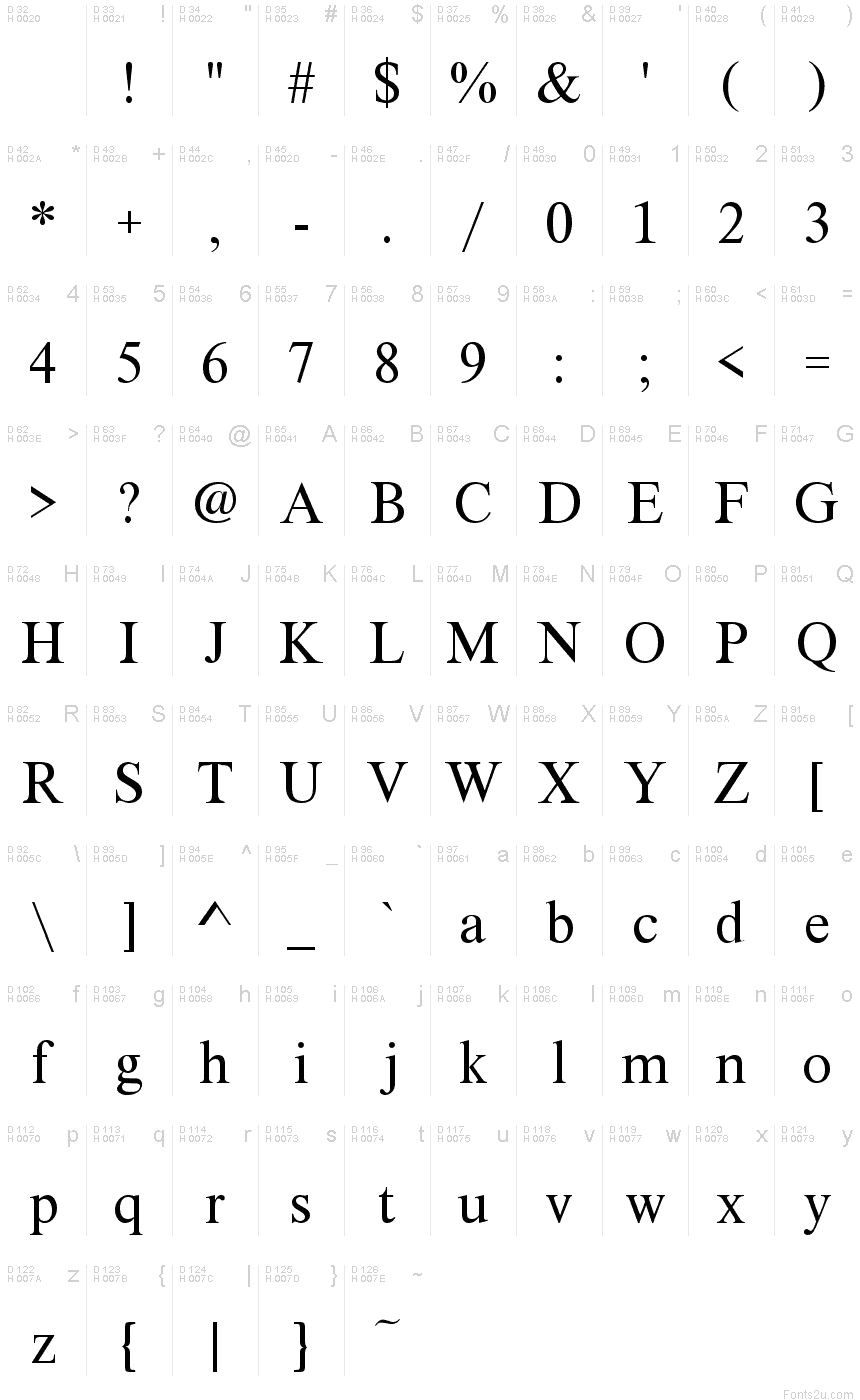XSerif Unicode
TrueTypeDo użytku osobistego
- Akcenty (częściowe)
- Akcenty (pełne)
xsuni.ttf
Tagi
Mapa znaków
Proszę korzystać z menu rozwijalnego aby podglądać różne mapy znaków zawierane do tej czcionki.

Podstawowe informacje o czcionce
Prawa autorskie
(c) Ch. Singer 1997. Use Font Property Extension to read License table.
Rodzina czcionki
XSerif Unicode
Podrodzina czcionki
Regular
Wyjątkowa identyfikacja podrodziny
DTP- XSerif Unicode Version 1
Pełna nazwa czcionki
XSerif Unicode
Nazwij Wersję tabelki
Version 1.00
Postscriptowe imiona czcionki
XSerifUnicode
Zawiadomienie o znaku towarowym
Created by Type-Designer 3.0
Producent
Opis
In addition to the codepages mentioned in "Charset/Unicode" table, this font contains Old Russian characters (Yat', Fita, Izhitsa) and combining diacritical marks with it's right UNICODE numbers.
There are also further characters used by Trediakovskij in 18 century and some characters for transliteration in user defined UNICODE area.
You can use these characters only if you have a UNICODE-based text processor (e.g. MS Word 97).
XSerif Typeface
When I wanted to create some special fonts for students of slavistics (e. g. for transliteration an Old Russian) I looked for a font with a "Times®"-like typeface that I could use as a base for my new fonts. But I found that all quality fonts are copyrighted and the quality of free and public domain fonts on Internet didn't please me, so I decided to create a new font with a slightly changed "Times®"-like typeface that I called "XSerif". Most common letters as "A" or "H" probably look like they do in every similar typeface, except slightly different poportions, serifs and weight, but some letters as cyrillic "zh" or cyrillic "l" are originally designed because I didn't like their shape in other "Times®"-like typefaces.
There is only Regular typeface existing at this time.
If you are looking for a base font to create fonts containig special characters you can use XSerif fonts under the two conditions described in "License" table.
There are also further characters used by Trediakovskij in 18 century and some characters for transliteration in user defined UNICODE area.
You can use these characters only if you have a UNICODE-based text processor (e.g. MS Word 97).
XSerif Typeface
When I wanted to create some special fonts for students of slavistics (e. g. for transliteration an Old Russian) I looked for a font with a "Times®"-like typeface that I could use as a base for my new fonts. But I found that all quality fonts are copyrighted and the quality of free and public domain fonts on Internet didn't please me, so I decided to create a new font with a slightly changed "Times®"-like typeface that I called "XSerif". Most common letters as "A" or "H" probably look like they do in every similar typeface, except slightly different poportions, serifs and weight, but some letters as cyrillic "zh" or cyrillic "l" are originally designed because I didn't like their shape in other "Times®"-like typefaces.
There is only Regular typeface existing at this time.
If you are looking for a base font to create fonts containig special characters you can use XSerif fonts under the two conditions described in "License" table.
Rozszerzone informacje o czcionce
Obsługiwane platformy
PlatformaKodowanie
MicrosoftTylko BMP unikod
MacintoshAntykwa (roman)
UnicodeUnikod 1.0 semantyka
Szczegóły czcionki
Stworzony1998-04-09
Korekta1
Liczba znaków463
Jednostki po Em2048
Prawa osadzeniaOsadzania dla stałych instalacji
Klasa rodzinyWolne szeryfy
GrubośćŚrednio lekka
SzerokośćPodstawowa
SzerokiNormalny
Styl MacPogrubiony
KierunekTylko znaki skierowane od lewej do prawej
Natura wzoruRegularny
PochylenieProste
Grubość kreskiRegularna
GęstośćNierówny